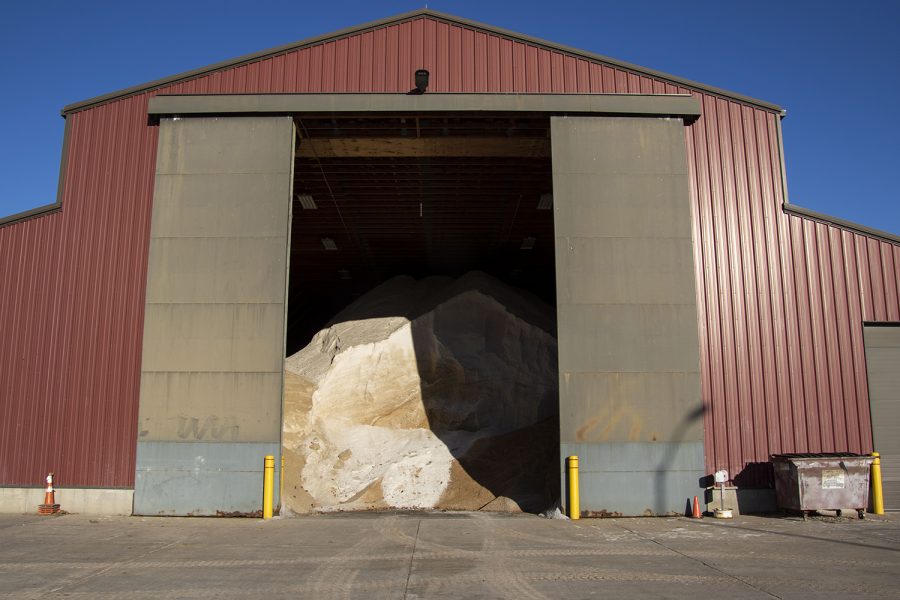Iowa City to use new anti-ice methods on city roads this winter
Instead of using solid salt, the city has purchased equipment which will allow it to make a liquid solution of salt called brine.
Iowa City’s salt and sand barn ready for use, on Monday Nov. 30, 2020.
December 1, 2020
Iowa City plans to implement new methods to combat dangerous winter roads this winter. Rather than using solid salt to de-ice the roads, Iowa City’s Streets and Traffic Engineering division now has the ability to make salt brine, which can proactively ice-proof the roads.
The Iowa Department of Transportation published its winter road conditions map on Oct. 30, a resource that many Iowans use to make sure they can safely go where they need to after scraping a layer of ice from their car’s windshield.
According to Coralville’s Brine Fact Sheet, rock salt, which Iowa City has used in previous years, takes up to five times more material than salt brine to reach the same level of service on winter roads.
Brine is also a proactive measure, whereas rock salt is a reactive measure. Rock salt is typically used to melt ice after it has frozen, the fact sheet said, while brine is applied before snowfall to prevent freezing in the first place.
“What you’re trying to do is prevent snow from binding to the road,” Iowa City Superintendent of Streets and Traffic Engineering Brock Holub said. “[Brine] will keep that bond from happening, and then allow us to plow the snow off the road.”
Because of brine’s preventative nature, Holub said the division might not even need workers to come in after smaller snowfalls.
RELATED: Iowa City depletes salt stores
In addition to the brine-making equipment, he said the city also now has multiple trucks with 1,200-gallon brine tanks that will allow it to apply the substance to the road.
“They’ll be going out before a storm to shoot the roads, and then will also be adding brine to our material when we’re in the midst of a [winter] event, so that will help,” Holub said.
The city works closely with the University of Iowa to keep shared roads safe. UI Facilities Management uses bulldozers to remove large accumulations of snow.
“We coordinate when they’re going to do a downtown clean — that’s when they clear all the streets of cars,” UI Maintenance Manager Ken Friedhoff said. “And then they have to have all that snow out of there by like four or five o’clock in the morning … so it’s imperative that we have the bulldozer running because they’re just bringing truck after truck after truck.”
The UI also has its own new method of de-icing streets and roads, Friedhoff said, a liquid chemical called Cryotech C7 – manufactured in Mount Pleasant – to de-ice ramps.
Friedhoff said this will be the second year the UI will employ the liquid anti-icing agent, expanding its use from last winter.
Associate Director of UI Parking and Transportation Erin Shane said it is very important to keep the streets and roads around UI Hospitals and Clinics free of ice and snow.
“[The hospital] is always busy, it’s always full, so there is a low tolerance for ADA compliant impaired people … risking a fall,” Shane said.
She added that another plus to Cryotech C7 is how people can’t track it into the hospital when patients, visitors, and staff are coming in and out.
Although Iowa City and the UI will use new strategies to keep roads safe this winter, Holub’s annual advice to winter drivers remains the same.
“I always tell the public, if it’s snowing outside and you don’t have to be out then don’t be out, and take it slow,” Holub said.






